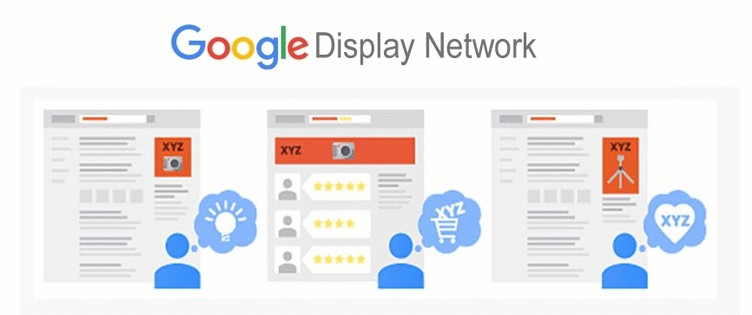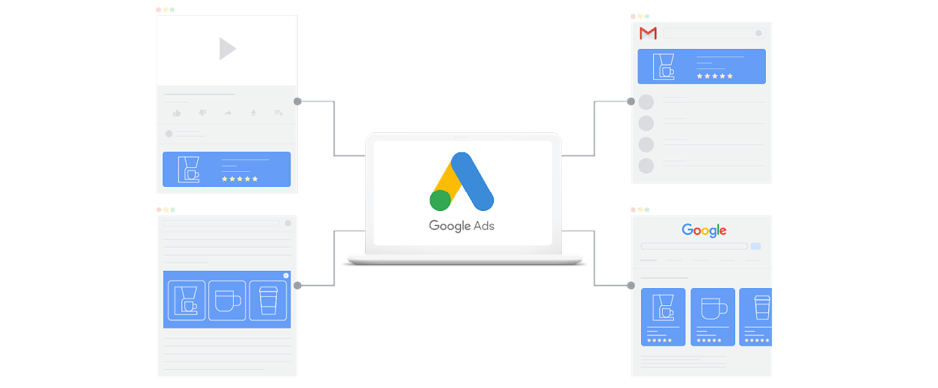The Top Performing Google Display Ad Sizes You Need to Know

A Comprehensive Guide to Google Display Ad Sizes
When it comes to running successful online advertising campaigns, finding the perfect fit for your ads is crucial. With Google Display Network being one of the largest advertising networks, it’s important to understand the different ad sizes available and how they can impact the success of your campaign.
Google offers a wide range of ad sizes to choose from, giving you the flexibility to create ads that best suit your business objectives and target audience. From large leaderboard banners to small square ads, each ad size offers its own advantages and disadvantages.
One of the most popular ad sizes is the leaderboard (728×90), which is typically placed at the top of a website. Its large size and prominent placement make it ideal for generating brand awareness and driving traffic to your website. On the other hand, smaller ad sizes like the medium rectangle (300×250) or the square (250×250) are great for reaching a more specific audience or fitting into tighter spaces on a webpage.
Another important factor to consider when choosing ad sizes is the compatibility across different devices. With the rise of mobile usage, it’s essential to design ads that look appealing and load quickly on smaller screens. Google provides responsive ad sizes like the responsive leaderboard and responsive rectangle that automatically adjust their size and layout based on the device they are being viewed on, ensuring a seamless user experience.
Ultimately, finding the perfect fit for your campaign requires a thorough understanding of your target audience, campaign objectives, and the platforms where your ads will be displayed. By experimenting with different ad sizes and analyzing the performance metrics, you can optimize your campaigns and achieve better results. So don’t hesitate to explore the wide range of Google Display ad sizes and find the one that perfectly fits your advertising goals!
Understanding Google Display Ads
Google Display Ads are a type of online advertising that appears on websites across the Google Display Network. These ads can be in the form of images, videos, or text and are designed to capture the attention of potential customers and drive them to take a specific action, such as making a purchase or signing up for a newsletter.
There are several key components to understanding Google Display Ads:
- Targeting:Google Display Ads allow advertisers to reach specific audiences based on factors such as demographics, interests, and browsing behavior. This targeted approach helps ensure that the ads are shown to the most relevant audience, increasing the chances of engagement and conversions.
- Ad Formats:Display ads can come in various formats, including responsive ads that automatically adjust their size to fit the device or web page they are being viewed on. Google also offers a range of pre-set ad sizes, such as leaderboard, skyscraper, and square, which can be selected depending on the ad campaign goals and the available ad space.
- Ad Placements:Advertisers have the flexibility to choose where their display ads appear across the Google Display Network. This network includes popular websites, mobile apps, and video platforms, providing extensive reach and visibility to the ads.
- Ad Auction:Google Display Ads are bought and sold through an auction process known as programmatic advertising. Advertisers bid to have their ads shown to their target audience, and the winning ad is determined based on factors such as bid amount, ad relevance, and quality score.
- Performance Tracking:Google provides robust reporting and analytics tools to track the performance of your display ads. This allows advertisers to monitor the number of impressions, clicks, conversions, and other key metrics, helping them optimize their ad campaigns for maximum effectiveness.
Understanding Google Display Ads is essential for businesses and marketers looking to expand their online presence and reach new customers. By leveraging the power of targeting, ad formats, ad placements, ad auction, and performance tracking, advertisers can create a highly effective and engaging display ad campaign that drives results.
Importance of Choosing the Right Google Ad Size

Selecting the Perfect Google Ad Size for Success
When it comes to Google Display Ads, choosing the right ad size is of utmost importance. The size of your ad can greatly impact its performance and effectiveness. Here are a few reasons why selecting the right ad size matters:
1. Visibility
Choosing a larger ad size increases the visibility and prominence of your ad. A larger ad is more likely to grab the attention of your target audience and stand out from the surrounding content. It provides more space for creative elements, such as images, videos, and text, allowing you to convey your message more effectively.
2. Compatibility
By selecting the right ad size, you ensure that your ads are compatible with various websites and platforms. Different websites have different ad size requirements, and if your ad doesn’t fit properly, it may appear distorted or get cut off, resulting in a negative user experience. By choosing the appropriate ad size, you can ensure that your ads look good on all websites and deliver a consistent brand experience.
Overall, selecting the right ad size is crucial for the success of your display ad campaign. It impacts the visibility, compatibility, and overall effectiveness of your ads. So, before creating your next ad, make sure to consider the best ad size that aligns with your campaign objectives and target audience.
Benefits of using Google Display Ad Sizes
Google Display Ad Sizes offer several advantages for advertisers looking to reach a wide audience and maximize their campaign’s effectiveness. Here are some of the key benefits:
1. Greater Visibility
By using Google Display Ad Sizes, advertisers can take advantage of the vast network of websites, apps, and platforms that are part of the Google Display Network. This means that your ads have the potential to reach a much larger audience compared to traditional display advertising methods.
2. Targeted Reach
Google Display Ad Sizes allow you to target specific audiences based on their interests, demographics, and online behavior. This level of targeting ensures that your ads are shown to the right people at the right time, increasing the likelihood of engagement and conversions.
3. Cost-Effective Advertising
The Google Display Network offers a variety of pricing options, including cost per click (CPC) and cost per impression (CPM). Advertisers can choose the option that best suits their budget and goals, making it a cost-effective advertising solution for businesses of all sizes.
4. Creative Flexibility
Google Display Ad Sizes provide advertisers with a range of creative options to effectively communicate their brand message. From static images to interactive ads, you have the freedom to experiment with different ad formats and designs to capture the attention of your target audience.
5. Performance Tracking and Optimization
With Google Display Ad Sizes, you can easily track the performance of your ads and make data-driven decisions to optimize your campaign. Google provides comprehensive analytics and reporting tools that allow you to monitor key metrics such as impressions, clicks, conversions, and more.
In conclusion, Google Display Ad Sizes offer numerous benefits for advertisers, including greater visibility, targeted reach, cost-effective advertising, creative flexibility, and performance tracking. By leveraging these advantages, advertisers can maximize the impact of their display advertising campaigns and achieve their marketing goals.
The Best Google Display Ad Sizes
When it comes to Google Display Ads, there are several standard sizes that advertisers commonly use. These sizes have been determined to be effective in reaching a wide range of audiences and driving engagement.
- Medium Rectangle (300×250):This is one of the most popular ad sizes, as it fits well within content and provides a good balance between visibility and space. It is commonly used for both desktop and mobile ads.
- Large Rectangle (336×280):This ad size offers a wider space compared to the medium rectangle, allowing advertisers to showcase more content and images. It is especially useful for campaigns that aim to drive conversions.
- Leaderboard (728×90):This longer ad size is often placed at the top or bottom of web pages. It provides ample space for advertisers to showcase their brand, message, and call-to-action.
- Wide Skyscraper (160×600):This vertical ad size is commonly placed along the side of web pages. It offers a high visibility and can include multiple creatives, making it great for displaying products or promotional offers.
- Half Page (300×600):This large vertical ad size provides ample space for advertisers to showcase their content. It offers high visibility and works well for campaigns that require more detailed messaging.
- Mobile Banner (320×50):This ad size is specifically optimized for mobile devices. Due to its small size, it fits well within the limited screen space and offers a clear call-to-action.
These are just a few examples of the standard Google Display Ad sizes available. Advertisers should consider their campaign goals, target audience, and available ad space when selecting the best ad sizes for their campaigns.
Popular Google Display Ad Sizes for Different Campaign Types

Choosing the Best Google Display Ad Sizes
Google Display Ads are a popular and effective way for businesses to reach their target audience on various websites and apps across the Internet. With a wide range of ad sizes available, it is important to choose the right size for your specific campaign type to maximize visibility and engagement.
Here are some popular Google Display Ad sizes for different campaign types:
| Ad Size | Campaign Type |
|---|---|
| 300×250 | The 300×250 ad size, also known as the medium rectangle, is one of the most commonly used ad sizes. It is versatile and can be used for various campaign types, including brand awareness, product promotions, and lead generation. |
| 728×90 | The 728×90 ad size, known as the leaderboard, is often used for header or footer placements on websites. It is ideal for campaigns that require a larger ad size and want to grab the attention of the audience at the top or bottom of a webpage. |
| 336×280 | The 336×280 ad size, also known as the large rectangle, is another popular choice for displaying ads on websites. It provides a larger space for advertisers to showcase their products or services and is suitable for campaigns that want to deliver a strong message. |
| 300×600 | The 300×600 ad size, known as the half page, offers a tall and narrow format that captures the user’s attention as they scroll through a webpage. It is ideal for campaigns focused on brand awareness or storytelling. |
| 970×250 | The 970×250 ad size, known as the billboard, provides a large and impactful ad format that can’t be missed. It is suitable for campaigns that want to create a strong presence and engage users with visually appealing content. |
These are just a few examples of the popular Google Display Ad sizes available. It is important to consider your campaign goals, target audience, and the placement options offered by different websites and apps when choosing the ad size that best suits your needs.
Remember, the right ad size can significantly impact the success of your campaign, so take the time to test and optimize your display ads to ensure maximum effectiveness.
Custom Google Display Ad Sizes
While Google provides a range of pre-set ad sizes for its Display Network, sometimes you may need a custom ad size to better suit your campaign goals and the specific platforms you are targeting.
Creating custom ad sizes allows you to maximize the impact of your ads and optimize their performance by tailoring them to fit the available ad spaces on different websites and mobile apps.
Benefits of Custom Ad Sizes
Custom ad sizes offer several benefits for advertisers:
- Improved visibility: By creating custom ad sizes, you can ensure your ads stand out on various platforms, helping you capture the attention of your target audience.
- Enhanced user experience: Custom ad sizes enable you to design ads that seamlessly integrate with the layout of the websites and apps where they appear, providing a more enjoyable and natural user experience.
- Increased engagement: Custom ad sizes allow you to experiment with different sizes and formats to find the most effective ones for driving user engagement and conversion.
How to Create Custom Ad Sizes
To create custom ad sizes for your Google Display Network campaign, follow these steps:
- Access your Google Ads account and navigate to the campaign you want to edit.
- Click on the “Ads & Extensions” tab.
- Select the ad group where you want to add the custom ad size.
- Click on the “+ Ad” button and choose “Image ad” or “Responsive display ad” depending on your preference.
- In the ad creation interface, select the “Custom” option under the ad size dropdown menu.
- Enter the desired width and height for your ad, keeping in mind the best practices recommended by Google.
- Design your custom ad using appealing visuals and persuasive copy.
- Save and preview your ad to ensure it looks great across different devices and platforms.
- Once you are satisfied with the ad, click on the “Save” button to add it to your campaign.
Remember to test and optimize your custom ad sizes regularly to maximize their performance and achieve your campaign objectives. Monitor the metrics and make adjustments as needed to ensure your ads are reaching the right audience and driving the desired actions.
Factors to Consider when Choosing the Perfect Ad Size

Key Factors in Choosing the Perfect Ad Size
When it comes to running a successful advertising campaign, choosing the right ad size can make all the difference. The size of your ad can determine its visibility, effectiveness, and overall impact. Here are some important factors to consider when selecting the perfect ad size:
- Target audience: Consider the demographics and preferences of your target audience. Different ad sizes may be more appealing to specific age groups or industry segments.
- Platform: Think about where your ads will be displayed. Different platforms may have specific ad size requirements, and it’s important to choose a size that fits well within the available space.
- Visibility: Larger ad sizes tend to attract more attention and are more likely to be noticed by users. If your goal is to create a visually striking ad, opting for a larger size may be beneficial.
- Content: Consider the type and amount of content you want to include in your ad. Certain sizes may provide more room for text, images, or interactive elements.
- Ad placement: Think about where your ad will be placed on the webpage. If it’s placed in a sidebar or in-line with the content, a smaller ad size may be appropriate. However, if it’s placed at the top of the page or as a full-page takeover, a larger ad size may be more effective.
- Mobile optimization: With the increasing use of mobile devices, it’s essential to choose an ad size that is mobile-friendly. Consider responsive ad sizes that can adapt to different screen sizes and orientations.
- Competition: Analyze the ad landscape and study your competitors. Look for opportunities to differentiate yourself by choosing an ad size that stands out from the crowd.
- Testing and optimization: Don’t be afraid to experiment with different ad sizes. Test multiple sizes and analyze the performance metrics to identify the ones that generate the highest click-through rates and conversions.
By carefully considering these factors, you can choose the perfect ad size that aligns with your campaign goals, target audience, and platform requirements. Remember, the perfect ad size can make a big impact on the success of your advertising efforts.
Testing and Optimization of Google Display Ad Sizes
When running a Google Display Ad campaign, it’s crucial to test and optimize the different ad sizes to maximize its effectiveness. By testing and optimizing ad sizes, you can attract more attention, increase click-through rates, and ultimately drive more conversions.
Here are some tips for testing and optimizing Google Display Ad sizes:
| 1. Conduct A/B Testing |
| A/B testing involves creating two or more variations of your ads with different sizes and measuring their performance against each other. This allows you to identify which ad sizes perform better and adjust your campaign accordingly. Make sure to test a variety of sizes to see what works best for your target audience. |
| 2. Analyze Performance Metrics |
| Keep a close eye on performance metrics such as click-through rates (CTR), conversion rates, and cost per conversion. These metrics can help you identify which ad sizes are driving the most engagement and conversions. Focus your budget and efforts on the ad sizes that perform well and iterate on the ones that underperform. |
| 3. Consider Responsive Display Ads |
| Responsive Display Ads automatically adjust their size, appearance, and format to fit any available ad space. By using responsive ads, you can reach a wider audience across different devices and websites. Monitor the performance of your responsive ads and optimize them over time to improve their effectiveness. |
| 4. Test Different Ad Placements |
| Explore different ad placements within the Google Display Network. Some ad sizes may perform better in specific positions, such as above the fold or in the sidebar. By testing different ad placements, you can further optimize your campaign and maximize its visibility. |
Remember, testing and optimization are ongoing processes. Continuously monitor and analyze your campaign’s performance to make data-driven decisions. By testing and optimizing Google Display Ad sizes, you can improve your campaign’s effectiveness and achieve better results.
FAQ: Display Ads Google Sizes
What are the recommended Google Display Ad sizes?
The recommended Google Display Ad sizes include the following: 728×90 leaderboard, 300×250 medium rectangle, 336×280 large rectangle, 300×600 half-page ad, and 320×100 large mobile banner. These sizes work well on a variety of devices and placements.
Can I use custom ad sizes on Google Display Network?
No, Google Display Network only supports specific ad sizes that are recommended by Google. These sizes have been tested and proven to perform well across different websites and devices. Using custom ad sizes may result in technical issues or poor ad performance.
Which ad size is best for mobile devices?
The 320×100 large mobile banner is the recommended ad size for mobile devices. This size fits well on most mobile screens and provides a good balance between visibility and usability. It is important to optimize your ad creative for mobile devices to ensure a smooth and effective user experience.
The appropriate banner size depends on factors such as ad type, top-performing ad sizes, and the common display ad sizes in use.
How does the file size of an ad image impact its performance in digital marketing, specifically within Google Ads?
The file size of an ad image is crucial for digital marketing success, especially in Google Ads, as it affects loading times and overall user experience.
What are some common Google display ad sizes, and how do they contribute to a successful display campaign?
Common Google display ad sizes, such as rectangle ad and leaderboard ad, play a key role in a successful display campaign by offering variety and visibility.
Can you provide a cheat sheet for common Google display ad sizes to guide advertisers in creating effective campaigns?
A cheat sheet for common Google display ad sizes is essential for advertisers, ensuring they use the best-performing ad sizes and adhere to ad specs.
Ad inventory is crucial in Google Ads as it determines where banner ads are placed, influencing the overall effectiveness of display campaigns.
How do text and display ads differ in terms of performance, and what sizes are commonly recommended for each type?
Text and display ads differ in performance, and common ad sizes vary for each type, impacting their effectiveness in Google Ads.
What measures should advertisers take to ensure their Google display ads, especially static image ads, perform optimally across different ad slots?
Advertisers should ensure that static image ads are designed to fit common ad sizes and display optimally across various ad slots for maximum effectiveness.
What are the best-performing Google display ad sizes for mobile devices, and why are they considered effective in reaching a mobile audience?
Large mobile banner ad and standard mobile banner ad sizes are considered the best-performing for mobile devices, ensuring effective reach in mobile advertising.
How can advertisers make sure their display ads provide a seamless user experience across different display sizes and devices?
Advertisers should optimize their display ads to ensure a seamless user experience by considering common display ad sizes and designing for various devices.
In a successful Google display campaign, how do text and image ads complement each other, and what ad sizes are recommended for a balanced approach?
Text and image ads complement each other in a successful Google display campaign, and a balanced approach involves using recommended ad sizes for both text and display versions.
The effectiveness of display banner ads in Google Ads is influenced by the appropriate choice of image size.
What is the significance of selecting the right ad size for search ads in Google, and how does it contribute to overall campaign performance?
Selecting the right ad size for search ads in Google is crucial for overall campaign performance, ensuring optimal visibility and engagement.
Why are skyscraper ads considered among the best Google display ad sizes, and how do they contribute to a successful advertising strategy?
Skyscraper ads are considered among the best Google display ad sizes due to their vertical format, providing a unique and effective way to engage audiences.
What steps should advertisers take to ensure their Google display ads, especially mobile ad sizes, align with industry standards and user preferences?
Advertisers should ensure their Google display ads, including mobile ad sizes, align with industry standards and user preferences to maximize effectiveness.
How can advertisers make sure their display ads provide a seamless user experience across various ad sizes on Google’s display network?
Advertisers should design display ads to provide a seamless user experience by considering common ad sizes and optimizing for Google’s display network.
In what ways can advertisers confirm that the selected ad size is right for their Google display ads, ensuring optimal performance?
Advertisers can confirm the right ad size for their Google display ads by analyzing performance metrics and adjusting based on the campaign goals.
What are the key considerations for advertisers when it comes to Google display ads image sizes, and how do they impact ad effectiveness?
Advertisers need to consider key factors such as image size in Google display ads, as these factors significantly impact ad effectiveness and user engagement.
© PhoenixProject, with full or partial copying of the material, a link to the source is required.

Comments: 0